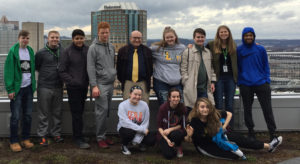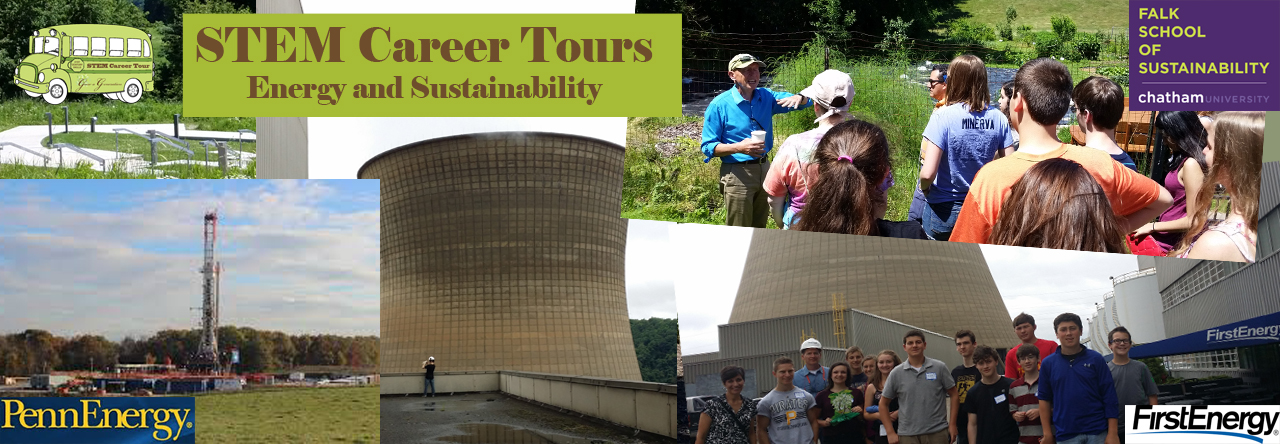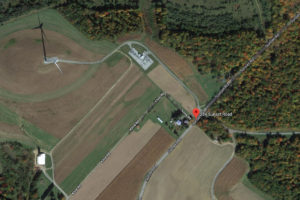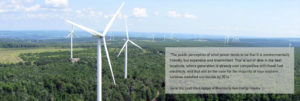 Sitting in the heart of Pittsburgh, the Energy Innovation center stands as a symbol of the changes taking place within the city. Once the Clifford B. Connelley Trade School, the Energy Innovation Center functions as a prototype example of taking an older style building and bringing it into the next century while still keeping the charm it possesses as a landmark of the city of Pittsburgh. On February 23rd, 2018 ten Students and two teachers from Seton LaSalle High School we gave the opportunity to tour the Energy Innovation Center, and see first hand the way a historical monument comes together with a sustainable future model.
Sitting in the heart of Pittsburgh, the Energy Innovation center stands as a symbol of the changes taking place within the city. Once the Clifford B. Connelley Trade School, the Energy Innovation Center functions as a prototype example of taking an older style building and bringing it into the next century while still keeping the charm it possesses as a landmark of the city of Pittsburgh. On February 23rd, 2018 ten Students and two teachers from Seton LaSalle High School we gave the opportunity to tour the Energy Innovation Center, and see first hand the way a historical monument comes together with a sustainable future model.
 The Energy Innovation Center is still being used to educate but is now gone away from the trades that the city of Pittsburgh was once known for. Their mission is to contribute to socially responsible workforce development, foster energy and sustainable technology advancement, and assist in job creation through a commitment to diversity, innovation and comprehensive education. It is referred to as a “green” energy center, a center for research and job training in the energy fields, including new, sustainable energy systems. Wind energy was the topic of our STEM Tour and a particular interest to the students working on a classroom book project, The Boy, the Bird, and the Turbine.
The Energy Innovation Center is still being used to educate but is now gone away from the trades that the city of Pittsburgh was once known for. Their mission is to contribute to socially responsible workforce development, foster energy and sustainable technology advancement, and assist in job creation through a commitment to diversity, innovation and comprehensive education. It is referred to as a “green” energy center, a center for research and job training in the energy fields, including new, sustainable energy systems. Wind energy was the topic of our STEM Tour and a particular interest to the students working on a classroom book project, The Boy, the Bird, and the Turbine.
Within the walls of the Center you’ll find corporations and startups, and universities like Penn State and Pitt. Soon UPMC will be moving in and using a new state of art surgical suite in order to train sanitary operating room practices. While they didn’t get to step inside, a tour guide pointed out the Electric Power Technologies Laboratory led by Dr. Reed. The lab focuses on advanced electric power grid and energy generation, transmission, and distribution-system technologies; power electronics and control technologies; renewable energy systems and integration; smart grid technologies and applications; and energy-storage development.
Training at the Energy Innovation Center focuses on industry required certifications and skills Courses are currently available in
- Energy Safety Passport
- Introduction to the Trades`
- Scalo Professional Roofing Training
- Surface Restoration and Treatment
- Underground Utility Job Readiness Training (Coming Soon)
- Fundamentals of Project Management
- Essentials For Project Management
 The Introduction to the Trades class is a unique introductory overview to building trades. During the six-week course, participants are exposed to a wide range of skilled occupations, through field trips to state-of-the-art union training facilities, hands-on activities, and meetings with expert craftspeople representing 18 local trade unions. In addition, the classroom portion introduces key job readiness skills needed to begin a career in the building and construction trades. Upon completion, successful participants will have the option of taking the next step and applying for union apprenticeship.
The Introduction to the Trades class is a unique introductory overview to building trades. During the six-week course, participants are exposed to a wide range of skilled occupations, through field trips to state-of-the-art union training facilities, hands-on activities, and meetings with expert craftspeople representing 18 local trade unions. In addition, the classroom portion introduces key job readiness skills needed to begin a career in the building and construction trades. Upon completion, successful participants will have the option of taking the next step and applying for union apprenticeship.
The students were amazed by the environmentally friendly technical innovations that are quickly becoming the norm for the city. Innovations including water soaking asphalt in the parking lot and a vertical wind turbine to help supplement energy for the building. On the outside the box type of idea for the cooling system of the building, Joseph Rouse had this to say “I like this place the best. It is so cool how they did the big containers of ice in the swimming pool for the air conditioning of this building!”
Dr. Anthony DeCaria, the students’ science teacher at Seton LaSalle High School, summed up the true purpose of the EIC when he said “It seems like a good place to launch an idea. It is a great environment for the cross-pollination of thoughts and collaboration.”

 On February 23rd, 10 Students from Seton La Salle High School and a pair of their teachers visited a wind farm located in the heart of Patton Township. They stepped from the bus into driving rain and a wind that blew against them stinging their faces. They met, huddled together among the cold and rain, with Michael Hoffman the Highland Assistant Site Manager for Everpower Wind Holdings.
On February 23rd, 10 Students from Seton La Salle High School and a pair of their teachers visited a wind farm located in the heart of Patton Township. They stepped from the bus into driving rain and a wind that blew against them stinging their faces. They met, huddled together among the cold and rain, with Michael Hoffman the Highland Assistant Site Manager for Everpower Wind Holdings.

 “America is built on energy.”
“America is built on energy.”
